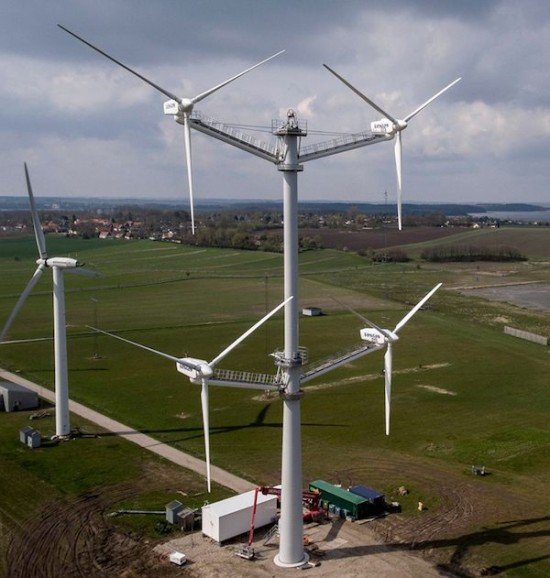Some time ago I wrote a post about the interesting concept of multirotor wind turbines, including the full scale prototype built by Vestas with 4 refurbished V29-225kW (that is, with a 29 meters rotor diameter).
It has been installed in a test site of the Technical University near Roskilde, in Denmark – I believe I’ve been there many years ago for the famous rock festival.
After running for approximately 3 years the prototype has been dismantled. The result of the test are still not public, but some information leaked.
For instance, an increase in annual energy production (AEP) of approximately 1.5% has been reported. It is due to an improved power curve, allowing the turbine to reach faster the nameplate capacity.
I’m not sure this result can be scaled to the current turbines in the market – however for a modern WTG a 1.5% increase is a lot of money.
Another counter intuitive fact is that the wake effect (the turbulence generated downstream by the WTG when the wind cross the blades) is minor in a multirotor. Don’t ask me why because I’m not an expert in fluid dynamics.
Additionally the load increase is not significant. That is good, because it has a direct impact on life expectancy of the turbine and on tower and foundation cost.
Moreover noise emission is not significantly higher. This point is especially relevant in Europe or other area with strong constraints in term of noise.

Leave a Reply